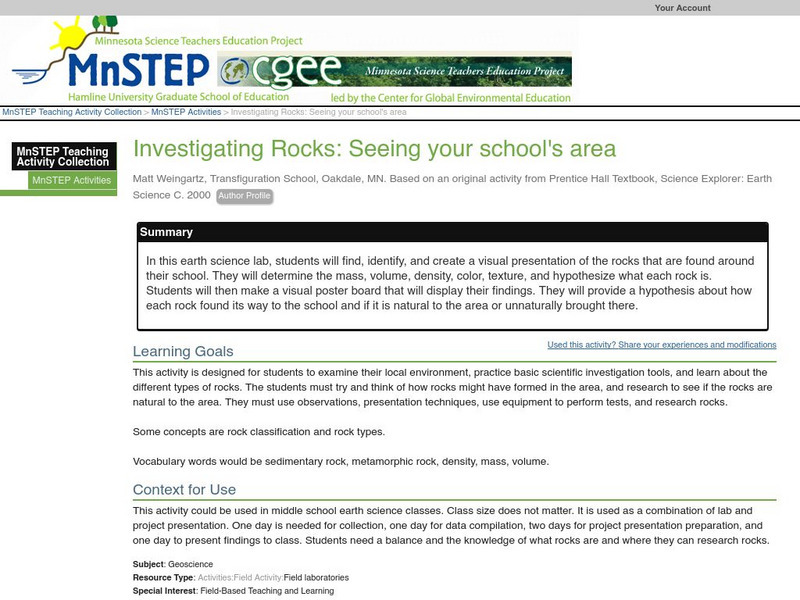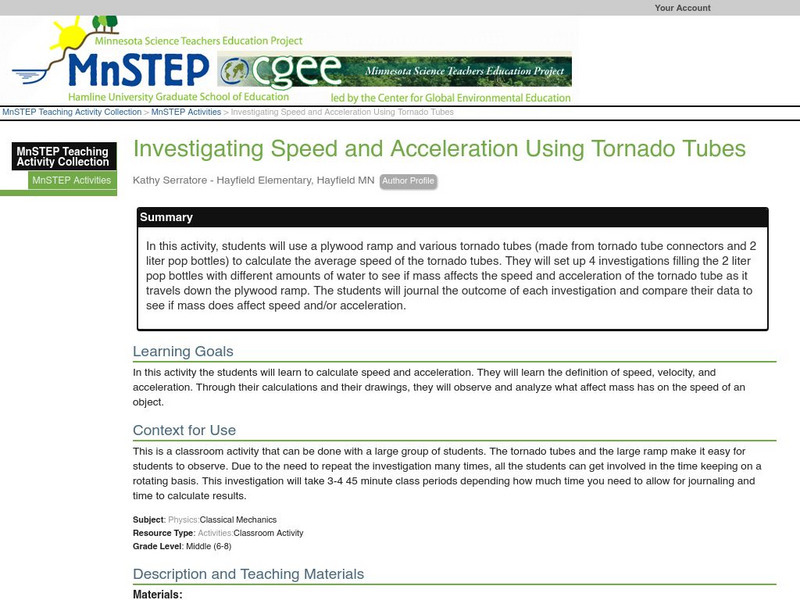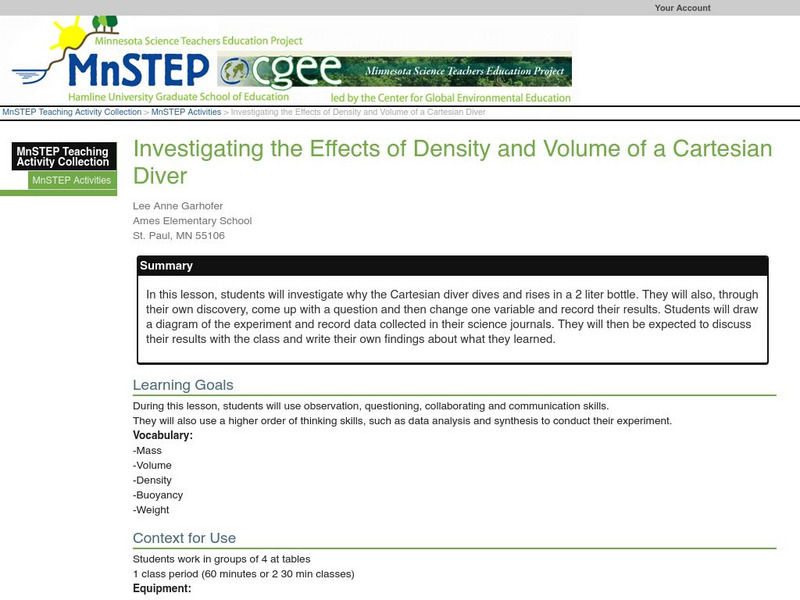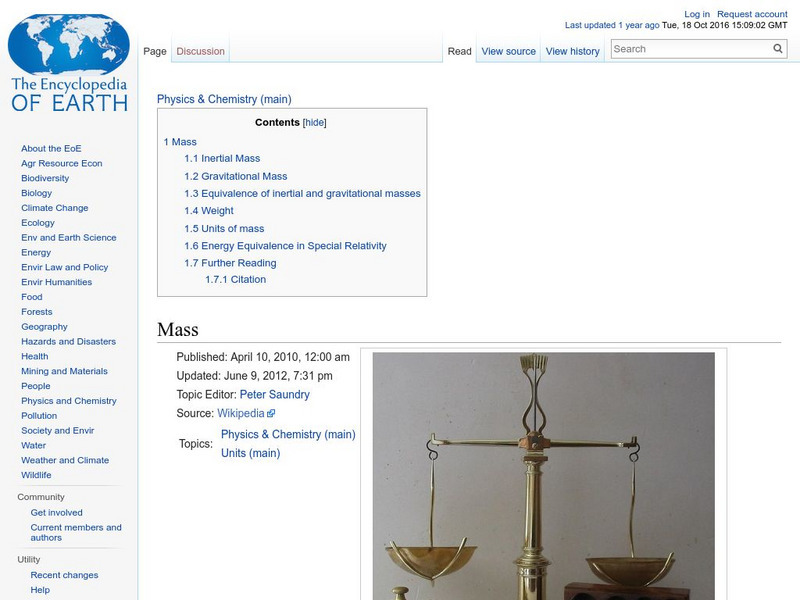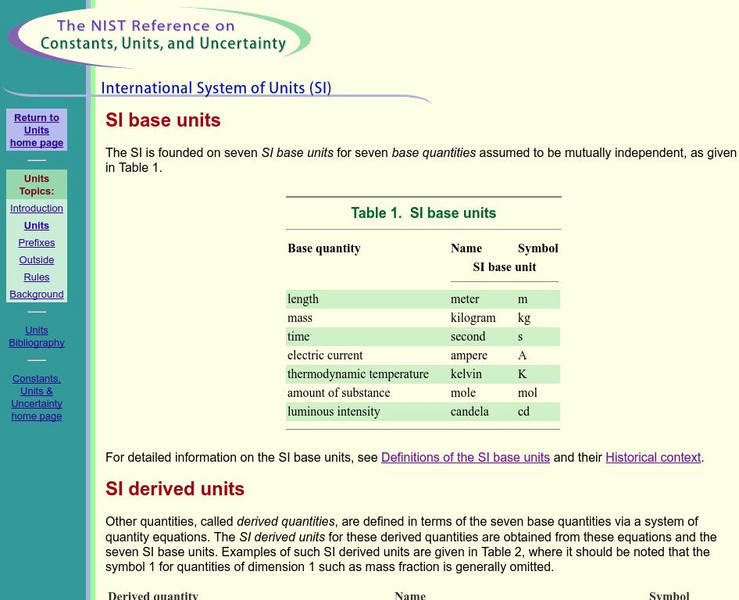Curated OER
Laboratory - Density of a Material
Students conduct a lab (with water, guar gum and sodium borate) and carefully record physical and chemical properties and changes throughout the session, and experiment with weighing by difference.
Curated OER
Propulsion Pop!
Students demonstrate an understanding of the text by completing a propulsion activity, charting the results, and answering questions that demonstrate an understanding of rocket propulsion.
Chem4kids
Chem4 Kids: Symbols in Chemical Equations
Chem4Kids! provides an overview of the symbols representing numerical values in chemical equations. Each symbol is defined and described.
CK-12 Foundation
Ck 12 Exploration Series: Simulations: Physics: Everglades Airboat
[Free Registration/Login Required] Learn about Newton's 2nd Law- the relationship between force, mass, and acceleration, for a wind-powered boat.
CK-12 Foundation
Ck 12 Exploration Series: Simulations: Physics: Astronaut Training Chamber
[Free Registration/Login Required] Uncover the relationship between weight and mass, on Earth and beyond.
Georgia Department of Education
Ga Virtual Learning: Physical Science: Force and Motion
In this student-paced module, students apply Newton's Laws of Motion to everyday life, calculate mathematical relationships involving force and motion using algebraic formulas, and understand the difference between mass and weight.
PBS
Pbs Learning Media: Your Weight on Other Worlds
This interactive resource from the Exploratorium calculates your weight on other bodies in our solar system and offers an explanation of mass and weight and the relationship between gravity, mass, and distance.
ibiblio
Ibiblio: How Many? A Dictionary of Units of Measurement
The Center for Mathematics and Science Education at the University of North Carolina at Chapel Hill provides an interesting and easy-to-use dictionary of the history and meaning of many measurement terms. Metric, International, and...
Science Buddies
Science Buddies: Buoyancy of Floating Cylinders
This project presents an interesting puzzle. A disk of wood will float face-up, that is, with its circular cross-section parallel to the surface of the water. A long log of wood, however, floats with the circular cross-section...
Science Education Resource Center at Carleton College
Serc: Investigating Rocks: Seeing Your School's Area
In this earth science lab, students will find, identify, and create a visual presentation of the rocks that are found around their school. They will determine the mass, volume, density, color, texture, and hypothesize what each rock is....
Science Education Resource Center at Carleton College
Serc: Investigating Speed and Acceleration Using Tornado Tubes
For this activity, students will use a plywood ramp and various tornado tubes (made from tornado tube connectors and 2 liter pop bottles) to calculate the average speed of the tornado tubes. They will set up 4 investigations filling the...
Science Education Resource Center at Carleton College
Serc: Investigating the Effects of Density and Volume of a Cartesian Diver
For this lesson, students will investigate why the Cartesian diver dives and rises in a 2 liter bottle. They will also, through their own discovery, come up with a question and then change one variable and record their results. Students...
Science Education Resource Center at Carleton College
Serc: Investigating Rotational Inertial Using Tops
In this inquiry or guided inquiry (depending on grade level) investigation, students will examine factors affecting rotational inertia. Students will keep a science journal of their investigation.
Science Education Resource Center at Carleton College
Serc: Irregular Shaped Object Lab Test
Students will determine what an unknown substance is by finding mass, volume, displacement, and density of an object. Students will also create a report which will require them to read a graph, interpret data, calculate averages, and...
Science Education Resource Center at Carleton College
Serc: Period of a Pendulum Investigation
Using a simulation, students will determine that the pendulum period is affected by the length of the pendulum and gravity but not mass in this activity.
University of Texas
Inside Mathematics: Fruits and Vegetables [Pdf]
This task challenges a student to use understanding of measurement to convert accurately between units of weight.
BioEd Online
Bio Ed Online: Introduction to Force and Motion
How is the motion of an object affected by forces that act on that object? Can you predict how the motion of an object will be affected by balanced and unbalanced forces? Is there a relationship between force, mass, and acceleration? In...
Encyclopedia of Earth
Encyclopedia of Earth: Physics & Chemistry: Mass
Defines inertial and gravitational mass, their scientific history, formulas used in their calculation, the definition of weight, units used for mass, and mass as perceived in the theory of special relativity.
PBS
Pbs Mathline: Mystery Liquids Lesson Plan [Pdf]
Students gather data from two mystery liquids to explore linear functions. Printable lesson.
University of Colorado
University of Colorado: Ph Et Interactive Simulations: Density
An interactive simulation that teaches about density, mass, and volume through explorations of mass and volume with different objects. This simulation can either be downloaded or played online and includes handouts, lesson plans, and...
University of Colorado
University of Colorado: Ph Et Interactive Simulations: Lunar Lander
An interactive simulation that teaches about the lunar landing, the moon, and mass by observing how changes in mass and thrust affect fuel consumption while trying to avoid a boulder field and put a lunar lander on the moon. This...
PBS
Pbs Teachers: Supersonic Dream
Examine how fuel use affects the mass of different planes during flight. This lesson teaches students how to determine the per person fuel cost of a transatlantic flight for seven airplanes, and display the results on a bar graph. Three...
Other
Lancaster University: Particle Physics Package
A collection of experiments, projects, and articles that will help students understand particle collision and mass, kinetic energy, magnetic field, the Large Hadron Collider, and detection of the Higgs particle.
National Institute of Standards and Technology (NIST)
International System of Units: Si Base Units
This is the definitive source for information on SI base units, derived units, squares, cubes, luminosity, field strength and flux density.







